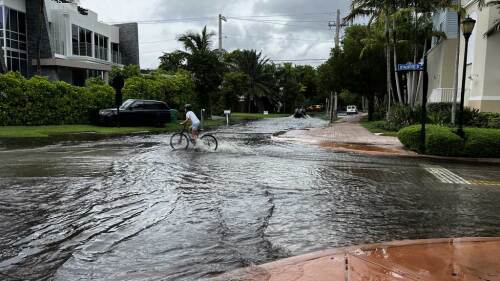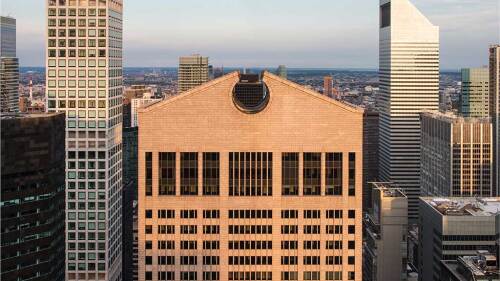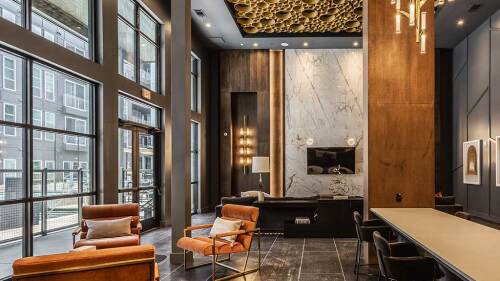In a mountainous suburb of La Paz, Bolivia, construction crews are finishing work on the first leg of a 10.7-kilometer (6.6 mi) network of gondolas, which may be the largest mass transit cable-car system in the world. The $235 million chain will include 11 stations with the capacity to handle 9,000 passengers an hour, according to the builder, the Doppelmayr/Garaventa Group. For La Paz commuters, the gondolas could cut travel time from the El Alto suburb from two hours to 25 minutes.
“There’s a lot of pressure to see how well the system performs,” says Steven Dale, a consultant and gondola evangelist who runs a site called the Gondola Project. “We’ve never seen that [scale] before.”
Cable-car systems are hardly new tech—they are a fixture in ski resorts and mountain villages around the world. But planners are increasingly exploring their use in urban transportation systems—particularly to solve “last mile” issues, where it is difficult to connect neighborhoods to the existing mass transit network.
In Georgetown, a neighborhood in Washington, D.C., community leaders are studying a proposal to use gondolas to cross the Potomac River, connecting Georgetown to the Rosslyn Metro station in Arlington County, Virginia.
“We feel like it is an interesting idea and maybe could be a solution to the problems we’re facing,” says Joe Sternlieb, chief executive of the Georgetown Business Improvement District.
Georgetown community leaders raised the idea after visiting Portland, where an aerial tram, opened in 2006, connects the waterfront to the Oregon Health and Science University, Sternlieb says. The group is raising $200,000 to explore the concept.
“There is broad consensus that this is an interesting idea and a broad consensus that it should be studied,” Sternlieb says.
Kirkland, Washington, is also considering the possibility of a commuter gondola.
Gondola systems can cost as much as two-thirds less to build than traditional rail systems, industry advocates say. No bridges or tunnels are necessary, there are fewer land costs, and a well-designed system can be up and running within two to three years from funding.
Gondolas also address one of the most vexing issues of urban transit systems—wait times. No one wants to get off a train just to spend 30 minutes waiting to catch a bus for the final leg of a commute. Gondola system capacities are lower than those for rail or buses, but they offer a steady flow of seats.
One of the first modern attempts to use cable cars in an urban mass transit system opened in Medellín, Colombia, in 2004. The 2,000-meter (6,500 ft) first phase connected the city’s Metro system to the poor and violent neighborhood of Santo Domingo, in the hills northeast of the city.
On a social and cultural level, the gondolas were a big success, says Julio Dávila, director of the Bartlett Development Planning Unit at the University College London, who wrote a book and paper on the Medellín line. “These people now feel part of the city,” Dávila says. (Medellín was named the world’s most innovative city last year by Citi and ULI.)
However, the gondolas did little to alleviate the neighborhood’s traffic woes, and there are often long lines to ride the gondolas. “Doubts remain as to the wider effects of greater mobility brought about by cable cars,” Dávila concluded in his report.
But Medellín demonstrated that gondolas are an alternative to traditional transportation methods in built-out urban areas, Dávila says today. “Medellín opened up other cities to thinking of this as a viable option,” he says.
Interest in gondolas is still largely confined to mountain regions, where the topography makes cable cars a natural choice. Caracas and Rio de Janeiro are among the cities that have turned to gondolas to address traffic flows in recent years.
But many planners remain skeptical. Gondolas are relatively slow, don’t make sense over long distances, and are usually most effective when they travel in a straight line. Cable cars can also be noisy. And many communities are wary of privacy issues if a gondola car is traveling above homes.
In Vancouver, a much-discussed plan to use a gondola system to connect the city’s Skytrain line to a university campus atop Burnaby Mountain was tabled after planners deemed it too expensive.
“On pure financial terms, the [gondola] is more expensive to operate than the bus service,” Jeffrey Busby, manager of infrastructure for Translink, the local transportation agency, told reporters.
Detractors say gondolas are still most effective as tourist attractions, not commuter vehicles. London’s gondola line over the Thames, built for the 2012 Summer Olympics, attracts more than 1.5 million passengers a year, but a very small percentage are commuters. Guardian newspaper columnist Owen Hatherley mocked the “Air Line” as “theme park whimsy.”
Gondolas are “useful only in a narrow range of cases,” says Jarrett Walker, a Portland-based public transit consultant and author of the book Human Transit. “You need sufficient volume of people traveling between just two points, with a significant barrier to solving the problem on the surface, such as topography or a land barrier like a water body.”
But Walker says there are “certainly situations” where gondolas are the most cost-effective transit option. In particular, gondolas can provide an alternative when there is a short-distance gap to be addressed and a constant demand, “because gondolas have fixed moderate capacity and can’t do huge peak crushes,” he says.
Gondolas are not a cure-all for transit systems, acknowledges Dale, the aforementioned industry evangelist who runs the site called the Gondola Project. But as speeds increase and systems grow more comfortable for commuters, they at least should be part of the discussion in urban areas, he argues.
“It solves a very specific problem that we’ve never been able to solve before and that’s the last-mile problem,” Dale says.








